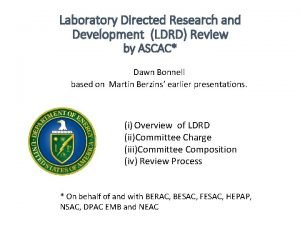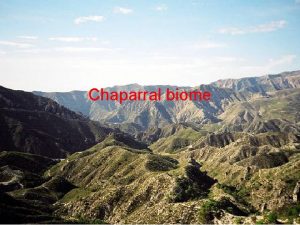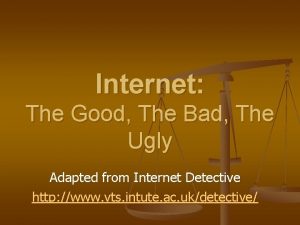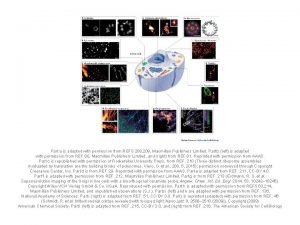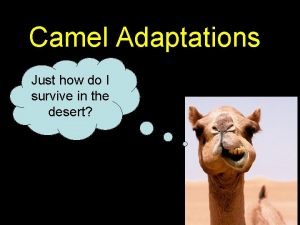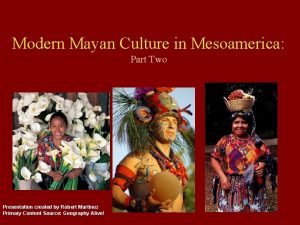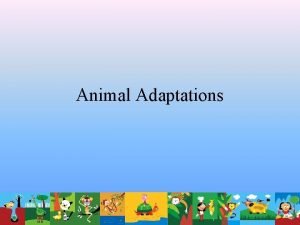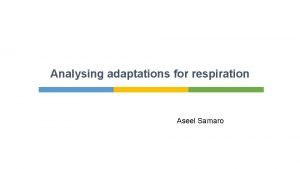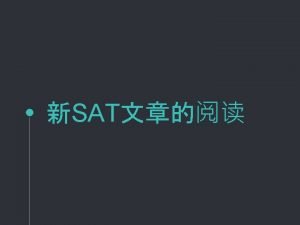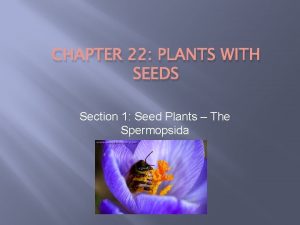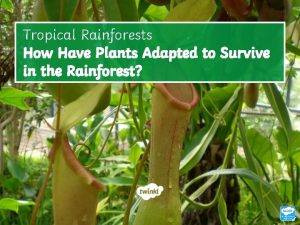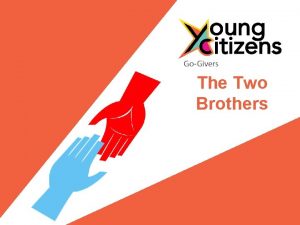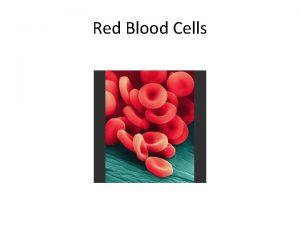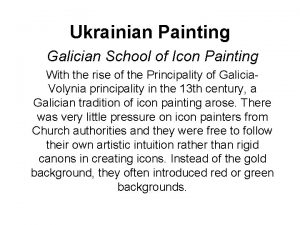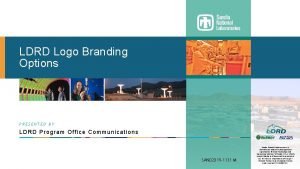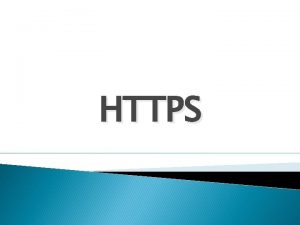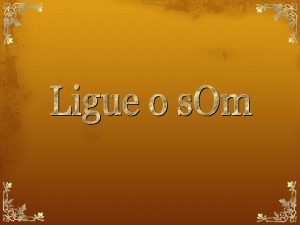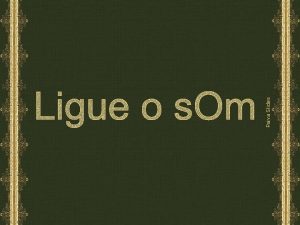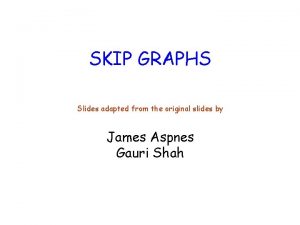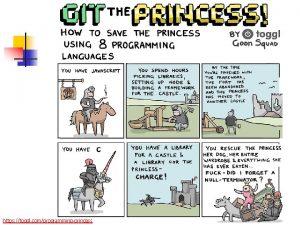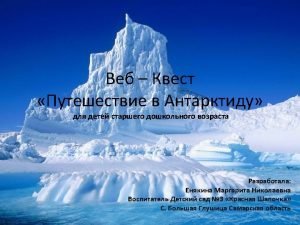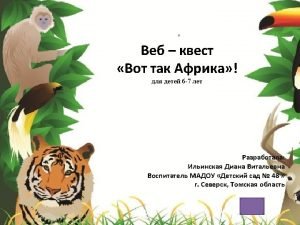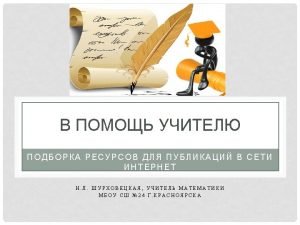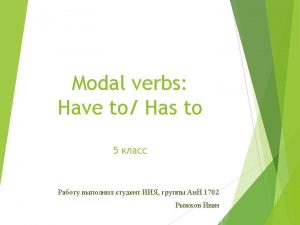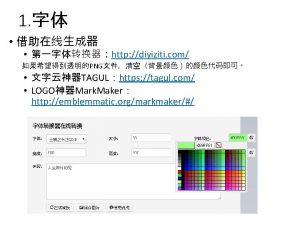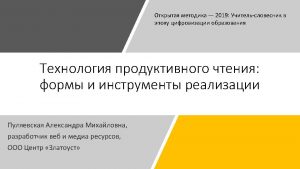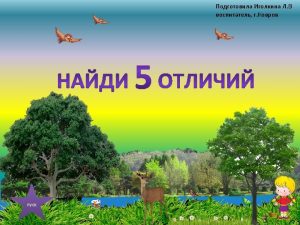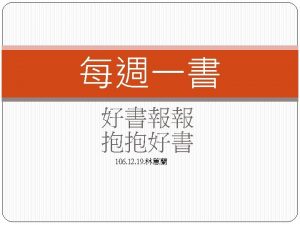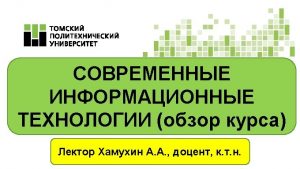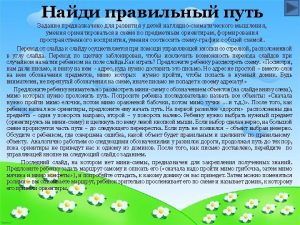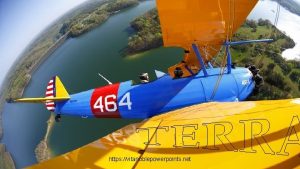LDRD Info adapted from LDRD info slides https



















- Slides: 19

LDRD Info (adapted from LDRD info slides: https: //ldrd. fnal. gov/subdir/ldrd_information_session_2019. pdf ) Robert Zwaska TSD LDRD Workshop 8 August 2019

TSD Workshop • Goal: to develop ideas and teams to submit LDRD preproposals – Preliminary Proposals due August 30, 2019 – Full Proposals due November 22, 2019 • Workshop – LDRD Info Presentation – Q&A – Discussion & Brainstorming • Resources: – LDRD site: https: //ldrd. fnal. gov/ – Workshop Page: https: //indico. fnal. gov/event/21489/ – TSD Lists & Notes: https: //drive. google. com/file/d/1 d 7 r. B 3_a 2 KDb. Ru. GLKPohba. Ge. FHkr. Rc. FHY/view? usp=sharing Robert Zwaska | TSD LDRD Workshop 2019. 08

Introduction • The Department of Energy allows national labs to have and administer a “Laboratory Directed Research and Development, ” LDRD, Program under DOE Order 413. 2 C – Maintain scientific vitality at the laboratory – Novel, cutting edge, demonstration, high risk/high reward projects at the forefront of science and technology. – Projects must be outside current programmatic activities and relevant to the missions of FNAL and DOE. – Maximum duration is 36 months. For FY 20, projects are expected to start Jan 2020. Robert Zwaska | TSD LDRD Workshop 2019. 08

For Fermilab personnel with great ideas … LDRD represents a great opportunity to think creatively, to explore a new idea, a new concept, try out a new technique … work at the forefront of science and technology. While there are requirements and restrictions, the idea is that the process is as little burdensome as possible. Your role is to be a “Principal Investigator of a LDRD Project” You propose a project, it gets reviewed, ultimately the Laboratory Director approves the project for funding. Your project gets assigned a project / task code and you manage the work plan outlined in your proposal. You obtain results in a deliverable milestone (publication, device, etc. ) and complete endof-project reporting. In some cases, your LDRD will “morph” into programmatic funding or funding from another source [this is considered a success!]. LDRD can also be used to support new strategic areas Robert Zwaska | TSD LDRD Workshop 2019. 08

LDRD Annual Program Plan An LDRD Advisory committee developed the implementation procedures for Fermilab’s LDRD program. These appeared as part of a LDRD Annual Program Plan and a set of documents that describe the process. The Annual LDRD Program Plan has been approved by DOE as part of the Fermilab Annual Lab Plan. For FY 20, we can spend up to 2. 0% of the lab’s budget on continuing and new LDRD projects. Robert Zwaska | TSD LDRD Workshop 2019. 08

LDRD: the money nationally (2017) max approved actual FY 14: $1. 5 M 0. 6%, $0. 2 M actual FY 15: $3. 5 M 1. 0%, $2. 2 M actual FY 16: $4. 5 M 1. 4%, $3. 3 M actual FY 17: $4. 5 M 1. 5%, $3. 8 M actual FY 18: $5. 1 M 1. 7%, $4. 6 M actual FY 19: ~5. 7 M 1. 9%, current year Actual amount spent (i. e. “LDRD Tax”) is about 1. 5%. Some recent growth due to initiatives lead by the Directorate such as Quantum Information. Slow growth to perhaps 2. 5% level is expected. Note: LDRD pays back into most of the overhead pool as well. Robert Zwaska | TSD LDRD Workshop 2019. 08

Call for proposals 1 st step: Preliminary Proposal (due Aug 30 2019 for full consideration) - Brief description of your project with the scope of the work plan and resources required AND sign-off approval from your Supervisor and Division Head - Management is aware of your intentions and believes it can accommodate your requested resources - LDRD Selection Committee gets a first look at possible proposals and might suggest changes to be compliant with LDRD requirements Robert Zwaska | TSD LDRD Workshop 2019. 08

Preliminary Proposal Process • Supervisor / Division have a say in whethere is support for you working on an LDRD project • The LDRD Selection Committee will review the preliminary proposals and make an initial determination on the relative strength of your proposal. Expect feedback by Sep 20. Full Proposals are due Nov 22 including working with your Division’s field financial manager on your proposed budget. • We expect ~40 Preliminary Proposals (all are very good ideas). Look for feedback to be such to encourage approximately ~15 Full Proposals. We expect to be able to fund 7 -10 new projects. • Usually, encourage, discourage, or neutral Robert Zwaska | TSD LDRD Workshop 2019. 08

Strategic Merit Criteria 6. Mission Relevance: Is the proposal relevant to the missions of DOE and of the Laboratory? 7. Initiative Relevance: Does the proposed activity address the specific objectives and research priorities of the LDRD Annual Call for Proposals? 8. Strategic Fit: Does the proposed activity match well with the Laboratory’s distinctive capabilities and core competencies? 9. Enduring Capability: Will the proposed new capabilities bring enduring benefit to the Laboratory? How likely will the project initiate a new program and funding? 10. Laboratory Reputation: If successful, will the project enhance the Laboratory’s reputation in the scientific and technical community. Robert Zwaska | TSD LDRD Workshop 2019. 08

Technical Merit Criteria 1. Scientific/Technical Significance: How important is the proposed activity to advancing knowledge and understanding within its own field and across different fields? 2. Innovativeness/Novelty: To what extent does the proposed activity explore original, innovative or novel concepts? 3. Proposer Qualifications: How well qualified are the proposers to conduct the project? Is there sufficient expertise to address all the technical requirements of the proposed research plan? 4. Proposal Quality: How well conceived and organized is the proposed activity? Are the estimates of time and effort reasonable? Is the requested level of funding, overhead charges, and level of contingency appropriate? 5. Likelihood of Success: Can the project be completed within the proposed funding levels and duration? Robert Zwaska | TSD LDRD Workshop 2019. 08

Call for proposals 2 nd step: up to ~6 page full proposal (due Nov 22 for full consideration) - Summary and full description of your project with a detailed research/work plan and resources required. - Emphasize novel nature, relation to Fermilab’s/DOE’s mission Detailed research plan with key milestones and ending deliverable - Budget table to be prepared with assistance of Division’s Field Financial Manager (FFM). - FTE costs for various job categories - Overhead rates for various pieces of the proposal Robert Zwaska | TSD LDRD Workshop Title PI (co-I’s) Project Description Significance Research Plan Future Funding Budget Table Qualifications (optional) 2019. 08

Full Proposal Process • All of the members of the LDRD Selection Committee will evaluate each Full Proposal • In early Dec, each PI of a Full Proposal will make a short presentation to the Selection Committee (no slides) where there is an opportunity to respond to initial questions. Additional questions might follow and require an email response. • The LDRD Selection Committee will meet and deliberate according to a charge to recommend a list of projects to the Director. We present an ordered list of recommended projects to the Director who makes the final decisions. Robert Zwaska | TSD LDRD Workshop 2019. 08

Criteria for Evaluating LDRD Proposals 13 Robert Zwaska | TSD LDRD Workshop 2019. 08

Managing a LDRD Project LDRD Selection Committee recommends LDRD Projects to the Director for approval subject to DOE Fermi site office concurrence. Work on the LDRD project may begin when project/task code exists. The PI is responsible for managing the LDRD project Cost effective use of funds Adhere to ES&H and Quality Assurance and other Lab policies Obtain Division approval of Work Plan (safety concerns addressed, etc. ) Notify LDRD Coordinator of any changes in scope, other issues Prepare mid-year review materials for multi-year projects Provide management with periodic status reports Protect intellectual property Culminate the project in a clear deliverable such as a publication Prepare required end-of-project reports Robert Zwaska | TSD LDRD Workshop 2019. 08

LDRD Projects • • • FY 14: 50 Preliminary, 26 Full Proposals, 7 funded, 7 completed FY 15: 34 Preliminary, 10 Full Proposals, 6 funded, 5 completed FY 16: 34 Preliminary, 15 Full Proposals, 7 funded, 2 completed FY 17: 38 Preliminary, 15 Full Proposals, 9 funded FY 18: 51 Preliminary, 20 Full Proposals, 10 funded FY 19: 43 Preliminary, 17 Full Proposals, 10 funded • FY 20: Expect comparable statistics • Presently about 25 -30 active projects Robert Zwaska | TSD LDRD Workshop 2019. 08

LDRD Projects – FY 18 & FY 19 LDRD-2019 -010 Davide Braga Characterization and Development of Nanoscale Integrated Circuits for Quantum Systems and Deep Cryogenic Detectors LDRD-2019 -011 Alex Drlica-Wagner Pixel-Configurable Skipper CCDs for Cosmological Applications LDRD-2019 -017 Lindsey Graph Neural Networks for Accelerating Calorimetry and Event Reconstruction LDRD-2019 -019 Stoyan Stoynev Accelerated superconducting magnet training by a quench current-boosting device (QSD) at quench current LDRD-2019 -020 LDRD-2019 -025 LDRD-2019 -027 LDRD-2019 -031 Mattia Checchin Sergei Nagaitsev Gabriel Purdue Yu-Chiu Chao Charge and Flux-insensitive Superconducting Qubit Prototype Quantum effects in undulator radiation Accelerator Control with Artificial Intelligence Demonstration of the microwave quantum communication via "warm" channel between two ultracold quantum systems LDRD-2019 -033 LDRD-2019 -039 Robyn Madrak Alexandra Rahlin Improving magnetic materials for RCS cavity tuners Development of Microwave Readout Electronics for Massively Multiplexed Arrays of Transition-Edge Sensors LDRD-2018 -003 Eric Dahl A scintillating liquid argon bubble chamber for WIMP and CEv. NS LDRD-2018 -006 LDRD-2018 -009 Brian Nord Vladimir Kashikhin Modeling Physical Systems with Deep Learning Algorithms High Temperature Superconducting Magnet with Circular Coils LDRD-2018 -019 LDRD-2018 -020 Vadim Rusu Diktys Stratakis Broadband spectral sensitive graphene photodetector Increasing the intensity of muon based experiments using wedge absorbers LDRD-2018 -025 Panagiotis. Spentzouris Towards a Quantum Computing Science Center at Fermilab LDRD-2018 -037 LDRD-2018 -040 Juan Estrada Stephanie Timpone Development of 10 kg Skipper-CCD experiments Dark Matter as Sterile Neutrinos Search Satellite LDRD-2018 -041 LDRD-2018 -049 Cristián Peña David Johnson Quantum Networks Using Time-bin Photonic Qubits A Quasi-CW bunch-by-bunch H- Neutralization Laser System for Longitudinal Phase Collimation in Linacs and other Applications LDRD-2018 -052 Alex Drlica-Wagner Understanding Dark Matter with the Faintest Galaxies LDRD-2018 -053 Craig Hogan Verification of Planck Scale Correlations in the Reconfigured Fermilab Holometer LDRD-2018 -054 Sergei Nagaitsev Single-electron experiments in the Fermilab IOTA ring Robert Zwaska | TSD LDRD Workshop 2019. 08

LDRD Projects well-distributed across Divisions PPD (15. 5): Benson, Estrada(2), Soares-Santos, Tiffenberg, Sonnenshien, Chou, Apresyan(½), Dahl, Rusu, Timpone, Hogan, Drlica-Wagner(2), Braga, Rahlin Neutrino (4): Lockwitz, Niner, Fava, Estrada Accelerator (13): Piekarz, Saewert, Zwaska, Scarpine, Valishev, Prebys, Chattopadhyay, Kashikhin, Stratakis, Johnson D. , Nagaitsev(2), Stoynev, Madrak Technical (8): Posen, Wu, Xu, Romanenko, Thangaraj, Checcin, Chao Computing (11. 5): De. Mar, Rivera, Wang, Paterno, Chang, Cancello, Gray(½), Nord, Spentzouris, Peña, Purdue Robert Zwaska | TSD LDRD Workshop 2019. 08

Summary and Questions Nigel was a strong champion for establishing LDRD initially at Fermilab and remains a strong supporter. There is tremendous potential within the Fermilab staff to do great things. LDRD allows for those great things to get started. Web site: ldrd. fnal. gov Please contact tsch@fnal. gov with any questions FY 2020 deadlines are fast approaching, the LDRD site is your initial resource. Robert Zwaska | TSD LDRD Workshop 2019. 08

Interactive session • • • Q&A Project Discussions Brainstorm Topical Areas Brainstorm Subjects Assemble Projects We expect you to leave this workshop and assemble your preproposal, get feedback on it as needed, and take care of the submission process – TSD & AD will not micromanage. Full proposals will be more managed by AD (and maybe TSD) to help with budgets and resources. Robert Zwaska | TSD LDRD Workshop 2019. 08
 Ldrd proposal
Ldrd proposal A small child slides down the four frictionless slides
A small child slides down the four frictionless slides Energy conservation quick check
Energy conservation quick check Chaparral biome climate
Chaparral biome climate Adapted from the internet
Adapted from the internet Adapted with permission from
Adapted with permission from Outline synoynm
Outline synoynm How is a camel adapted to life in a desert
How is a camel adapted to life in a desert Gallant
Gallant In what ways have the highland maya adapted to modern life?
In what ways have the highland maya adapted to modern life? Behavioral adaptations of zebras
Behavioral adaptations of zebras Adapted animals in the rainforest
Adapted animals in the rainforest This passage is adapted from jane austen
This passage is adapted from jane austen Spermopsida plants
Spermopsida plants How have plants adapted to the rainforest
How have plants adapted to the rainforest Xerophytes
Xerophytes Brother quotes from brother
Brother quotes from brother How are red blood cells adapted
How are red blood cells adapted The outsiders adapted for struggling readers
The outsiders adapted for struggling readers Info:https://kyiv.vlasne.ua/street/aivazovsky-lane/
Info:https://kyiv.vlasne.ua/street/aivazovsky-lane/
